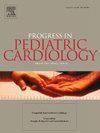儿童心脏重症监护病房慢性危重症患儿的护理:初级姑息治疗干预与临床结果的相关性
IF 0.8
Q4 PEDIATRICS
引用次数: 0
摘要
背景:越来越多的儿科患者入住心脏重症监护病房(CICU),符合慢性危重症(CCI)的标准,但如何满足他们的独特需求却鲜有共识。一种新的初级姑息治疗干预,慢性护理查房(CCR),被用来评估是否正确识别了具有较高死亡风险的CCI患者。目的暴露于初级姑息治疗干预(CCR)将与CICU中CCI患者的临床特征和较差的健康结果相关。方法本回顾性队列研究评估了2014年至2019年在儿科CICU住院14天的患者。收集了人口统计学、临床数据以及患者是否接受了感兴趣的初级姑息治疗干预——慢性护理查房(Chronic care Rounds, CCR)。CCR是每周一次的跨专业会议,讨论CCI患者,随后是家庭会议。临床特征与CCR之间的关系采用卡方/Fisher精确检验和Wilcoxon秩和检验进行分析。结果共确定692例住院患者,其中253例(37%)接受CCR。CCR患者更容易被诊断为综合征(42% vs 32%, p 0.007)、心外异常(47% vs 39%, p 0.042)、染色体异常(54% vs 36%, p <;0.001),或者将“其他”作为种族与高加索人相比(33% vs 23%, p 0.001)。CCR组的死亡率更高(34% vs 16%, p <;0.001)。与非CCR组相比,CCR组的DNR发生率更高(19% vs 7%, p <;0.001)以及更高的亚专科姑息治疗参与率(49% vs 23%, p <;0.001)。两组患者停用维持生命技术的比例相似(45% vs 42%, p 0.202)。本研究表明,CCR成功地识别出死亡风险较高、因此更需要与家人沟通的患者。本文章由计算机程序翻译,如有差异,请以英文原文为准。
Caring for chronically critically ill children in the pediatric cardiac intensive care unit: Correlations of a primary palliative care intervention with clinical outcomes
Background
A growing number of pediatric patients admitted to the cardiac intensive care unit (CICU) meet the criteria of chronically critically ill (CCI), but there is little consensus on how to meet their distinct needs. A novel primary palliative care intervention, Chronic Care Rounds (CCR), was used to assess whether CCI patients with higher risk for mortality are being identified correctly.
Objectives
Exposure to primary palliative care intervention (CCR) will be associated with clinical characteristics and worse health outcomes of CCI patients in the CICU.
Methods
This retrospective cohort study evaluated patients admitted to a pediatric CICU for >14 days between 2014 and 2019. Demographics, clinical data, and whether patients received the primary palliative care intervention of interest, Chronic Care Rounds (CCR), were collected. CCR is a weekly interprofessional meeting to discuss a CCI patient, followed by a family meeting. Associations between clinical characteristics and CCR were analyzed using Chi-square/Fisher's exact and Wilcoxon rank sum tests.
Results
A total of 692 hospitalizations were identified, with 253 (37 %) receiving CCR. CCR patients were significantly more likely to have a syndrome diagnosis (42 % vs 32 %, p 0.007), extracardiac anomalies (47 % vs 39 %, p 0.042), chromosomal abnormalities (54 % v 36 %, p < 0.001), or list ‘Other’ as race compared to Caucasian (33 % v 23 %, p 0.001). The CCR group had a higher mortality rate (34 % vs 16 %, p < 0.001). The CCR group had higher rates of DNR in place compared to the non-CCR group (19 % vs 7 %, p < 0.001) as well as higher rates of sub-specialty palliative care involvement (49 % vs 23 %, p < 0.001). The two cohorts had similar rates of withdrawal of life sustaining technology (45 % vs 42 %, p 0.202).
Conclusions
This study showed that CCR successfully identified patients at higher risk for mortality and therefore greater need for communication with family.
求助全文
通过发布文献求助,成功后即可免费获取论文全文。
去求助
来源期刊

PROGRESS IN PEDIATRIC CARDIOLOGY
PEDIATRICS-
CiteScore
0.90
自引率
11.10%
发文量
69
审稿时长
75 days
期刊介绍:
Progress in Pediatric Cardiology is an international journal of review presenting information and experienced opinion of importance in the understanding and management of cardiovascular diseases in children. Each issue is prepared by one or more Guest Editors and reviews a single subject, allowing for comprehensive presentations of complex, multifaceted or rapidly changing topics of clinical and investigative interest.
 求助内容:
求助内容: 应助结果提醒方式:
应助结果提醒方式:


